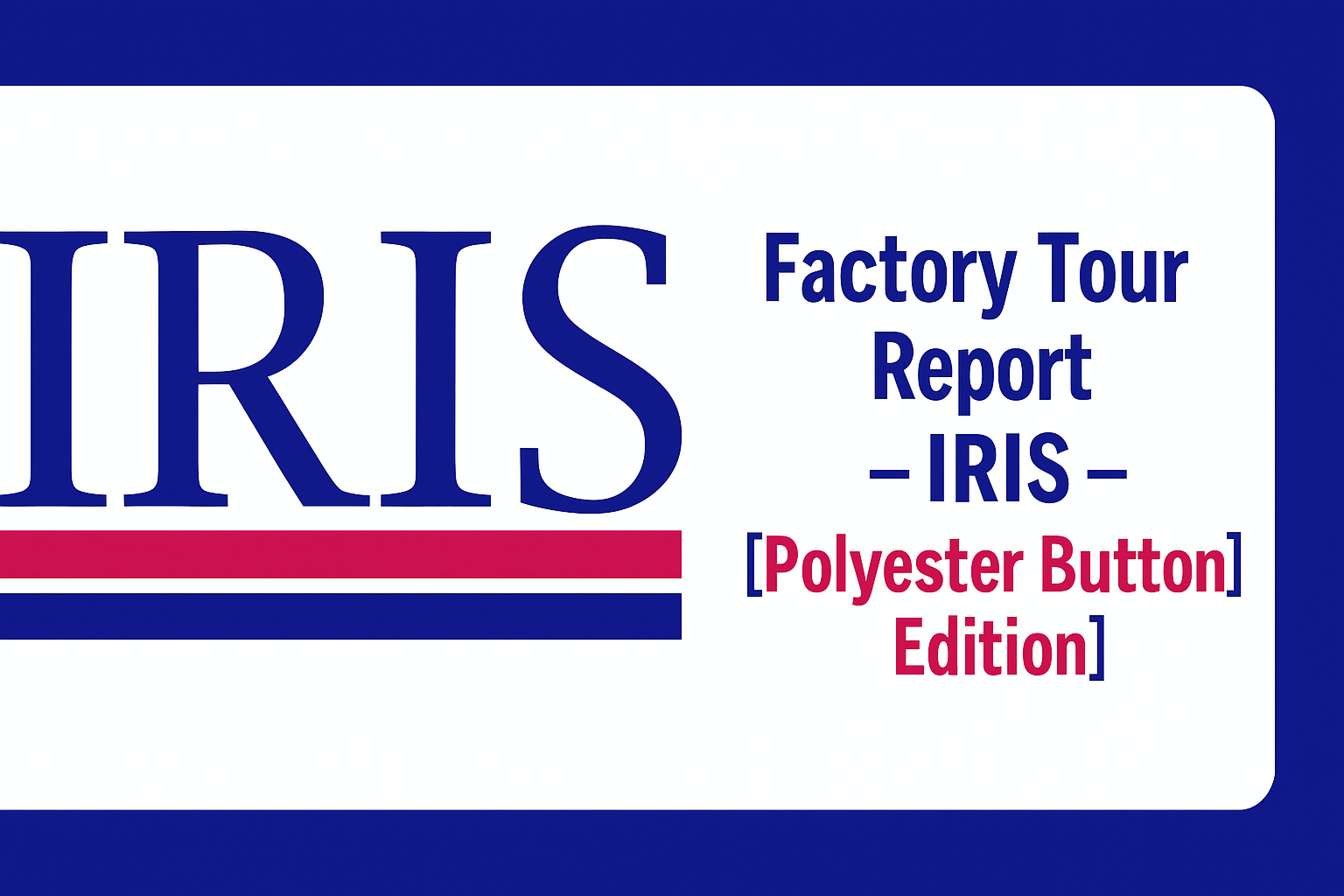Hello! I’m Kosuge, the newest editor at TAILORS WORLD.
Continuing from our previous article, we’re back with the second installment of our factory tour at IRIS Co., Ltd.
This time, we’ll be diving into the world of brass and metal buttons!
Yajima Factory – The Specialist in Metal

Our guide this time was Mr. Akiyama, known for his clear and detailed explanations.
The Yajima Factory is home to the Metal Production Department and the SE Production Department, where metal buttons are manufactured and plated.
There are several methods for producing brass buttons:
- Solid Single-Piece
- Cover-Type
- Die Casting – molten metal is poured into a mold
- Rubber Casting – molten metal is poured into a rubber mold
In this article, we’ll focus on the two types we observed during our visit: the Solid Single-Piece Buttons and the Cover-Type Buttons.
Solid Single-Piece Buttons
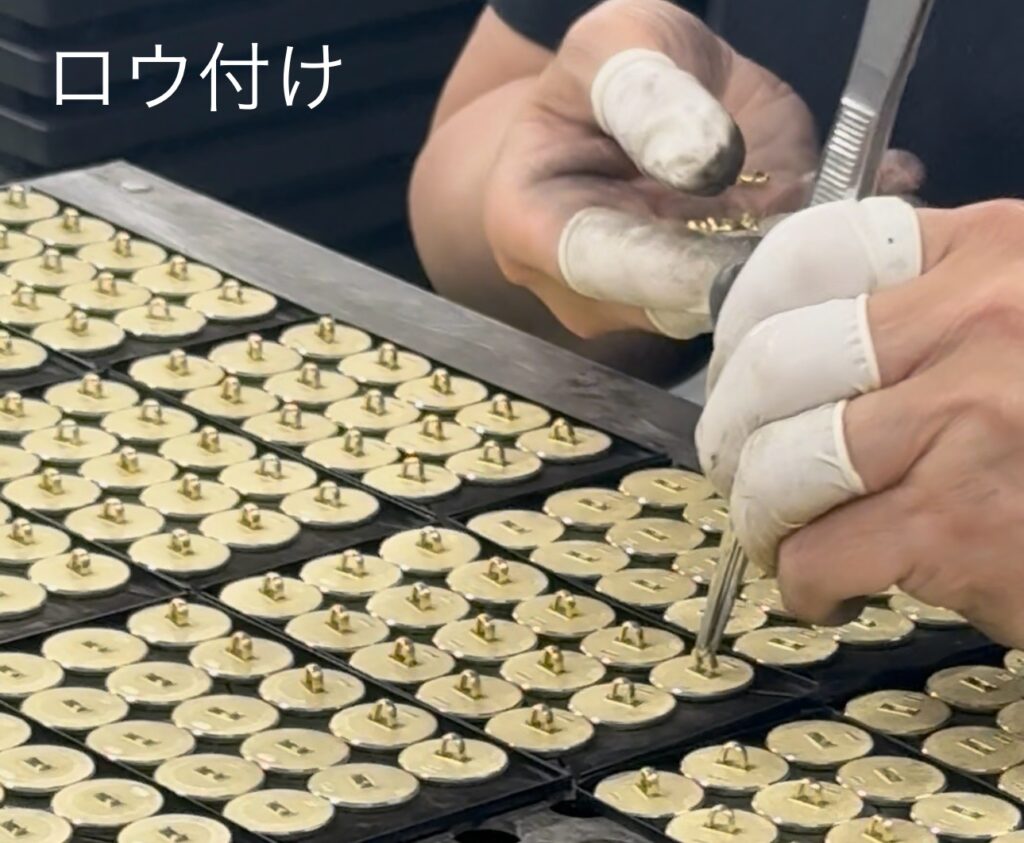
This type is made by pressing a pattern onto a thick rectangular brass blank, then cutting it into shape, machining the back, and attaching a shank.
The shank is attached using a method called brazing (low-temperature metal bonding).
Interestingly, the brazing material, often called “solder”, has seen significant price increases—one can now costs around ¥330,000 (approx. \$2,000)!
Cover-Type Buttons
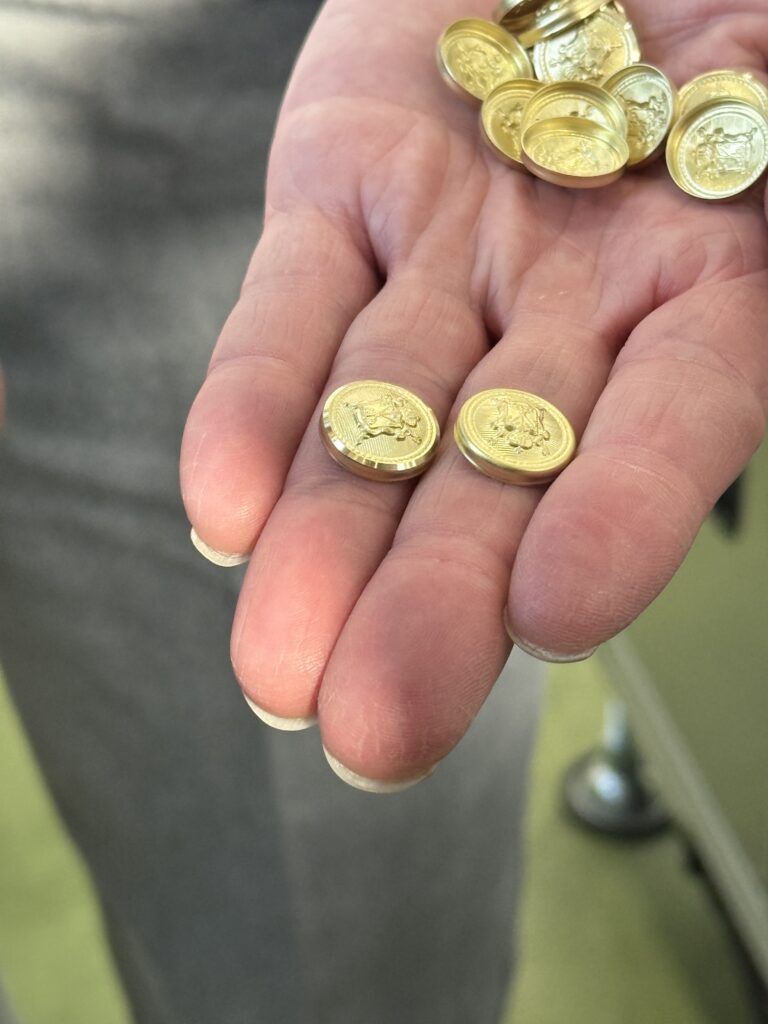
These buttons are made by combining two parts: a base back plate and a decorative front plate.
This assembly process is called “caulking.”
In caulking, the alignment between the shank and the surface design is crucial—any misalignment throws off the overall balance.
To ensure precision, camera-guided automated caulking machines are used.
They instantly detect the design and apply perfect alignment during assembly.
However, for irregular-sized products, the finishing is still done by skilled artisans by hand.
This balance of technology and craftsmanship allows IRIS to flexibly meet a wide range of client needs—and that’s where their trust comes from.
Button Trivia: Why the Hole?
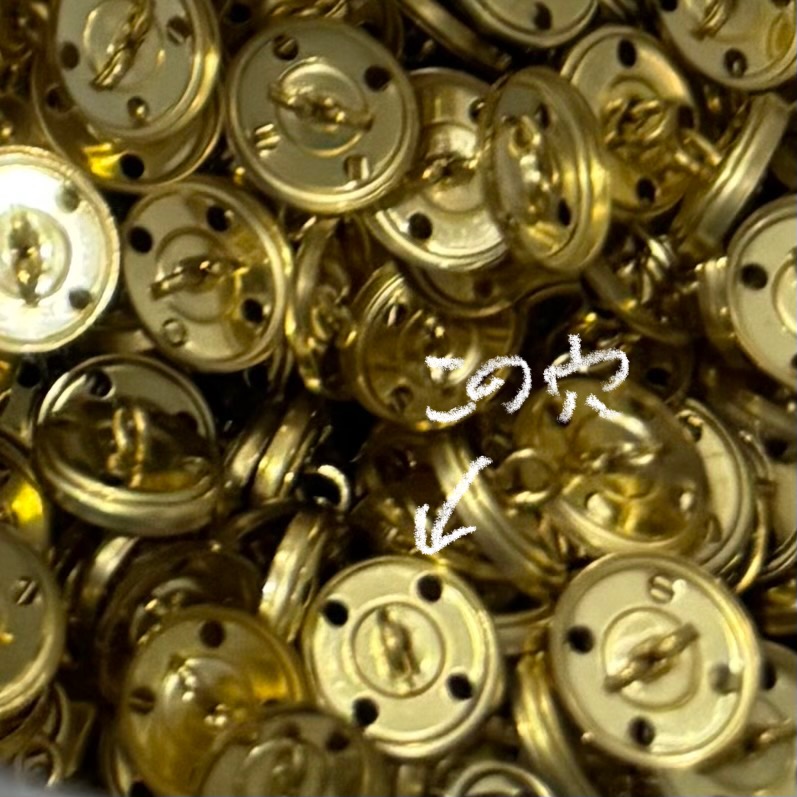
Have you ever noticed the small hole on the back of a cover-type metal button?
It’s not a defect—it’s actually designed to release trapped moisture during the plating process.
Even the smallest details have been carefully engineered!
Plating: Adding Color and Protection
After forming, the buttons go through surface treatments like cleaning, glossing, or dull finishing, and then head into the plating stage.
We were fortunate to have Mr. Sakai, a plating expert, guide us through the technical steps involved.
There are two primary types of plating:
- Dry Plating
- Wet Plating
Each of these is further divided depending on materials and techniques.
(Be warned: once you dive into the world of plating, there’s no turning back—it’s a deep rabbit hole!)
At IRIS, the main method is barrel plating, a type of wet plating.
A barrel is a container shaped like a drum with small holes.
Buttons are placed inside, immersed in plating solution, and rotated to evenly coat each one.
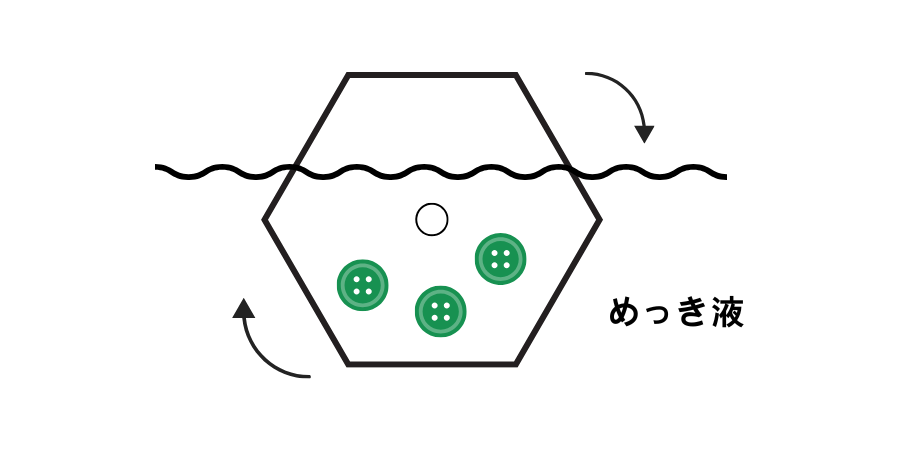
One challenge in barrel plating is preventing scratches from buttons hitting each other.
To solve this, IRIS adds dummy pieces that make up 40–50% of the contents to act as buffers.
Color Coding of Plating Solutions (Key Tip!)
- Green = Nickel
- Blue = Copper
- Transparent = Cyanide compound
Plating on ABS Resin – A Fascinating Technique
One of the most fascinating things we saw was the pre-treatment for plating on ABS plastic.
Plating on plastic? How does that work?
ABS is a synthetic resin made of three components:
- A: Acrylonitrile
- B: Butadiene
- S: Styrene
By etching the butadiene component, a catalyst can penetrate the surface, allowing copper to adhere.
(Etching is a technique that uses chemical erosion to create shapes by removing surface layers.)
Once the copper layer is applied, metal plating becomes possible.

However, because this process uses chemicals containing hazardous substances, very few factories are equipped to handle it safely.
At IRIS, strict safety standards are in place to ensure such specialized processes can be carried out responsibly.
Finishing and Quality Control
The buttons then go through final processes such as anti-rust treatment and painting—but even here, quality control is strict.
For example, in the urethane coating stage, access to the workspace is strictly limited to prevent even the tiniest dust particles from settling on the product.
Only buttons that pass these rigorous inspections make it into your hands!
✂ Summary

This visit gave us a deep look into the complex world of metal button production, with every technical aspect explained in detail by the experts.
We’ve just scratched the surface of what metal buttons have to offer—but I hope to continue learning and sharing these fascinating insights with all of you!
A heartfelt thank-you to everyone at Yajima Factory, and to Mr. Ono and Mr. Yamada for the warm hospitality and guidance!
For questions regarding accessories or garment manufacturing services, please don’t hesitate to contact us.
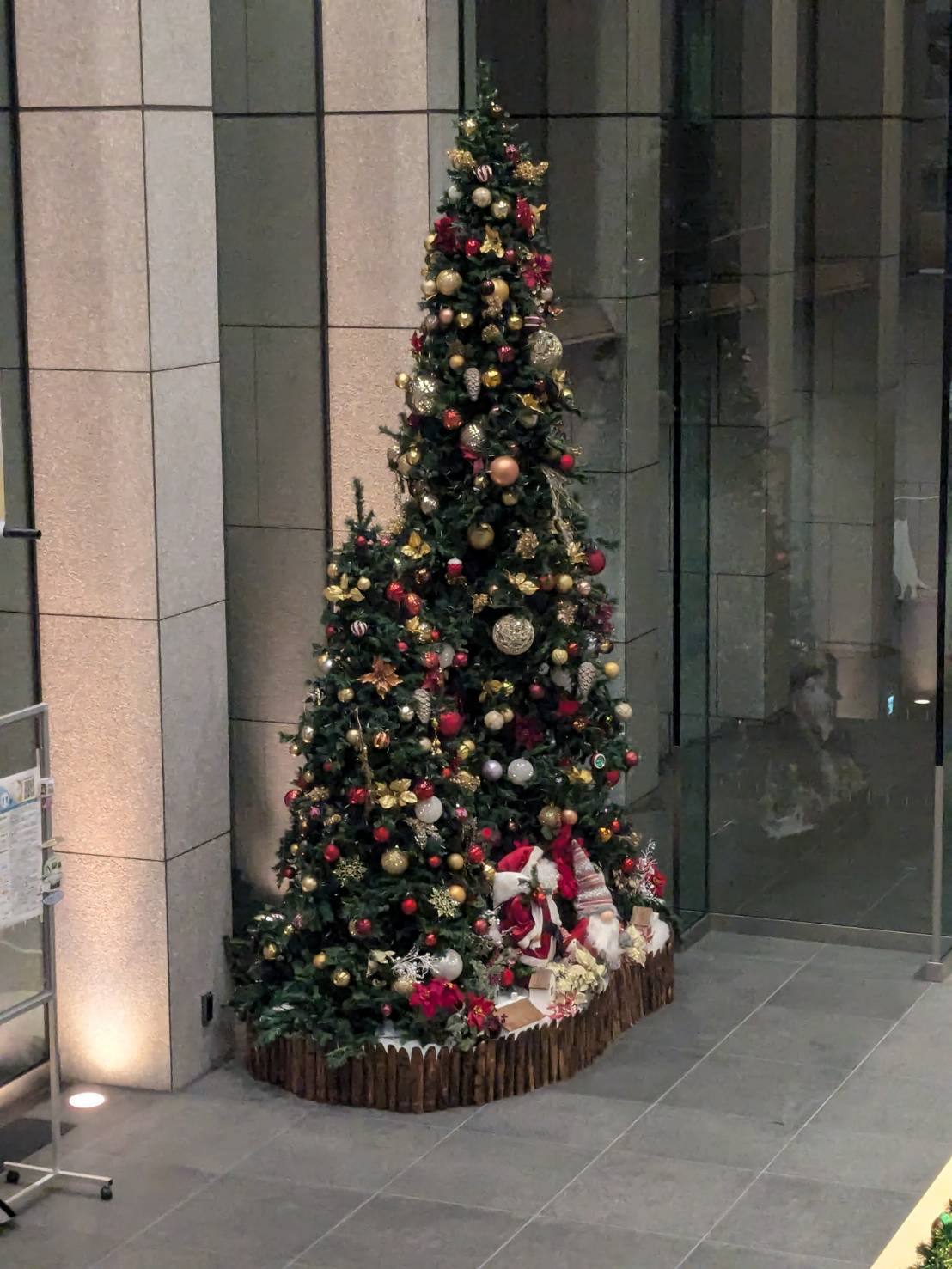
I’m Kosuge, and I joined the company in April 2025. I’m currently training hard to become a fully qualified professional. I love Pallas’s cats.


